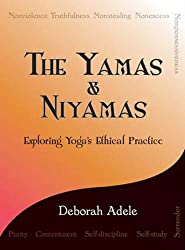
Although there are many benefits to mula-bandha, pregnant women should avoid it. Breathing in excess can reduce the oxygen supply to the baby as the uterus is still preparing. This problem can be avoided by having pregnant women learn yoga from a qualified instructor.
Moola bandha
The Moola Bandha is a fundamental yogic posture that helps to balance the pelvic floor muscles. It helps to increase the flow Apana vayu in your body, which is vital energy for our elimination. It strengthens the pelvic floor and lower back muscles, making asanas easier.
Engaging the perineum, one foot is placed under the other to create this position. This forces the apana vayu to move upward. It activates the Mooldhara Chakra. It can also be used for as long and as comfortably as possible.

Moola bandha kumbhaka
Moola Bandha (or kumbhaka) is a type of kumbhaka. It assists us in directing our prana (or psychic energy) upwards. It is a powerful exercise that requires the awareness of two points: the ajna and mooladhara.
The Perineum, or pelvic flooring, is the equivalent to the spinal column. It consists the perineum and the pubococcygeal muscles (PC), that run from the pubic bones to the tailbone. The PC muscle is responsible for storing prana in the body. When we practice the Moola Bhag, our prana can be moved from the pelvic to our pelvis and into our sushumna (subtle version of the spine).
Moola bandha root
Moola-bandha is a form of yoga that targets the pelvic nervous system and the urogenital system. It helps relieve depression and promotes good health. It helps to realign the mental, physical, and psychic bodies, which can help us attain kundalini awakening. This asana also strengthens and protects our lower backs, which are important for our spine. This asana helps us attain balance and comfort when we do asanas.
Practice Moola Bandha requires that you sit comfortably. You can either do Padmasana or a comfortable, cross-legged pose. Then, exhale and round your spine toward the ceiling. This should allow your energy to naturally draw upwards without straining. To achieve Moola bandha, you must focus on your trigger points.

Moola bandha jerkiness
Moola bandha has been shown to alleviate a number of mental and bodily maladies. It involves contracting of the perineum. This is the area between genital and anus organs. The puboperinealis is the main muscle involved with Moola Bandha. It aids in the efficient functioning of the pelvic organs and improves circulation. It increases awareness of genital arousal sensations.
FAQ
How long do yoga lessons last?
Yoga classes usually last anywhere from 45 minutes up to 90 minutes. Some teachers offer shorter or longer sessions at different times throughout the week.
There are many kinds of yoga.
Bikram Yoga (Bikram heated) is the most widely practiced type of yoga. Other forms include Hatha, Ashtanga, Vinyasa, Iyengar, Kundalini, Yin, Power Yoga, Flow Yoga, Reiki, Pilates, Restorative, Aerial, etc.
Can women do yoga
Absolutely! No matter their gender, women should be able to practice yoga.
Yoga can be done in many styles for both men and women.
Which yoga style is best for beginners?
Beginners often get confused by the many styles and types of yoga poses.
Hatha Yoga is the most well-known type of yoga. It focuses on stretching and physical fitness. It can also be used to relieve stress and improve your concentration.
Another popular style is Kundalini Yoga which involves breathing techniques and meditation. This practice can lead to many health benefits, including better flexibility, balance, or strength.
Yin Yoga is another option that beginners can try if they want to relax and calm their minds. Yin Yoga focuses on holding positions or poses for longer periods of time.
Statistics
- In comparison, a 125-pound person is estimated to burn 135 calories in 30 minutes of walking (at a pace of 15-minute miles) and 210 calories bicycling at a moderate pace on a stationary bike. (everydayhealth.com)
- Lock in 25% off your Founding Member rate. (corepoweryoga.com)
- According to calorie estimates calculated at Harvard Medical School, the average 125-pound person burns about 120 calories in a half hour of hatha yoga, and a 185-pound person burns about 178 calories in that half hour. (everydayhealth.com)
- About one in seven U.S. adults practiced yoga in the past 12 months, according to a 2017 national survey. (nccih.nih.gov)
- The people in the yoga group were 37 percent more likely to have quit smoking by the end of the 8-week program. (nccih.nih.gov)
External Links
How To
Can I do yoga during pregnancy?
Pregnancy can affect your ability to do certain poses safely. You should always consult your doctor before starting a new workout program.
You can still perform many poses during pregnancy. Here are some tips:
-
Weight lifting should not be done above the shoulders by pregnant women. Instead, opt for dumbbells and lightweight resistance bands.
-
Avoid deep twists as they could place pressure on your belly.
-
Try to avoid backbends until you give birth. They can strain your lower back.
-
To deliver your baby safely, you should not be seated cross-legged or lying on your stomach.
-
Make sure you have your doctor cleared you to perform inverted poses (e.g., headstands or handstands).
-
Do not exceed 30 minutes of practice per day.
Yoga can be continued during pregnancy, if you're at the right stage. Your doctor will let you know when you are ready for yoga.